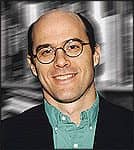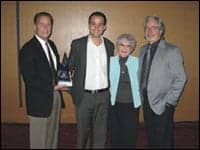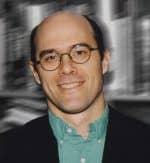
Once you’ve really committed yourself to doing it, choosing the 20 most-important trends in hearing health care is a bit like picking up items in a dark room while wearing one of those giant “We’re #1” fingers. Any way you look at it, you’re probably going to come off looking a bit silly, especially when people ask, “Why did you pick that one?” The “Top-20 Trends” identified on in the feature article of this edition of HR are, by no means, meant to be definitive or unassailable. In fact, I wavered on about two dozen other trends that could have been included. To wit, here are just 10 of them:
- Ear scans and e-impressions. The day is probably closer than most people think when a “magic wand” can be inserted into a patient’s ear, and a virtual 3-D impression—with no impression materials, syringes, or physical impression—will appear on your computer screen.
- Pediatrics leads the way in hearing science. Although manufacturers and component suppliers were already working on extended bandwidths, researchers from Boys Town and other centers gave the industry a big push with important findings about high-frequency cues for children. Similarly, pediatric audiology continues to blaze new trails relative to aural rehabilitation, comprehensive protocols, software (see Jane Woodward’s article “New Developments in Fitting Software for Children” in this issue), and hearing aid development.
- Bilateral cochlear implants. Without bilateral hearing aid fittings for about 80% of patients, the hearing aid market would be struggling to break the 1.6 million unit sales mark instead of the 2.6 million mark. In any industry, the market size and unit volumes largely determine the amount that can be spent on R&D and other resources, so the increasing acceptance and prescription of bilateral CIs could forever change the implant market.
- Getting people in the door sooner. Quite possibly, the number-one “wish” of the hearing care field would be to get people to address their hearing loss 3 to 7 years earlier. Relative to hearing aid use among the hearing-impaired in the 45 to 65 age group, there are 14.2 million nonusers versus 3.5 million users. Different products and approaches will continue to be developed to serve this market.
- The promise of recreational hearing products. Related to the above, recreational audiology and hearing conservation products have the potential to draw huge numbers of new and younger users—with and without hearing loss—who are interested in protecting their remaining hearing while using custom earplugs, custom earmolds for their MP3 players, assistive devices, as well as hearing instruments. For more information, see Brian Fligor’s article “Recreational Noise and Its Potential Risk to Hearing”.
- Hearing aids as tinnitus devices. As one of the oldest and most effective treatments for tinnitus, hearing aids may also evolve into even more sophisticated products and include more unique tinnitus-therapy or relaxation features (eg, Widex Zen music synthesizer).
- Genetic screening in hearing care. One can envision a day when you can take a genetic test and learn your susceptibility to hearing loss (ie, your individual percentage chance), and possibly even figure in your maximum lifetime occupational and recreational noise loads.
- Booming balance business. With the aging of America, fall prevention and balance assessment, as well as vestibular rehabilitation, are going to be in great demand. Audiologists are uniquely qualified to help.
- UNHS achieves near-universality. In 15 years, universal newborn hearing screening has brought a new dimension to quality hearing care.
- Internet technology and Internet 2.0. The Internet is said to be evolving from systems with PC-based/mainframe software to a system where all software and data reside in “cloud computing.” Internet 2.0 also implies changes in interactivity between clinicians, manufacturers, and patients.
There are many more, and you may disagree with those I’ve chosen. As always, your input is welcomed and greatly appreciated.
Karl Strom
Editor-In-Chief





